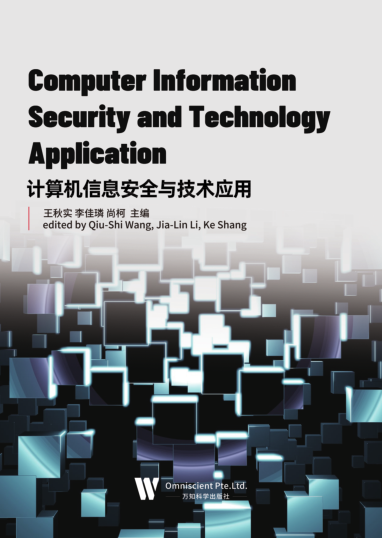
随着我国经济实力不断增强,人们生活水平日益提升,对日常出行有了更多的需求,增加了城市道路桥梁的交通压力。为保证人们出行的安全性,建筑工程企业必须要加大对技术管理和质量控制的重视,不断进行自我审视,寻找目前城市道路建设发展中存在的问题,并及时采取有效的解决措施。当下,城市交通压力的不断增大,为建筑工程企业带来了较大的挑战,如何提升施工技术管理和质量控制水平成为企业发展思考的关键问题。
在城市基础设施建设中很重要的一个组成部分是市政路桥工程项目,它不仅能够体现出城市的发展速度,还对人们的日常生活产生一定的影响。所以,城市要想长久稳固的发展,必须要高度重视市政路桥工程项目的建设。道路工程施工技术管理是道路工程质量的保证,因此施工技术人员要按照图纸的要求和施工技术规范对施工中的各个环节进行严格检查,对施工过程中出现的问题及时地进行科学分析和解决,使公路工程保质、保量的完成。目前,我国市场经济愈加成熟,企业竞争日趋激烈。路桥工程作为我国重要的基础性国民经济产业,已取得了显著的成绩。但在施工中仍会出现各类问题,为此,必须重视施工技术管理,掌握施工技术要点,采取切实可行的措施,全面提升施工技术管理水平,推进我国公路桥梁建设事业持续、健康发展。

随着网络技术的快速发展,传统的图书馆信息服务手段难以适应网络环境下快 速、高效的文献资源获取的需要。在网络环境下进行信息资源高度共享就成为信息 化建设的重点,数字图书馆建设势在必行。图书馆员应具备终身学习的能力、多方 面的实践能力和较强的心理适应能力,以便使图书馆事业更好地发挥信息资源服务 作用。特色服务是图书馆服务理念的延伸和升华,具有一定的价值取向。
现代图书管理观念是“以人为本”,以图书管理人员的自觉服务为特征。从“为 读者服务”转向“协调、合作、共享”,主动寻找图书信息服务市场为核心观念。 同样是服务,但其本质的内涵已经不一样了。它是在市场经济条件下,积极主动地 寻找服务,这从根本上改变了服务的方向,变被动为主动,变消极为积极,客观上 必然促使图书管理服务的水平提高。牢固地树立积极主动的服务的观念,可以冷静、 客观地正视传统图书管理存在的弊端,大胆进行图书管理改革,构建现代图书管理 新体系,推动图书管理发展。
信息网络化是现代图书管理发展的趋势,高素质的信息人才是现代化图书馆建 设的关键,主动开放多样的智力经营服务是现代图书管理的新模式。随着我国信息 化建设的加快、计算机网络的普及以及公共信息资源共享趋势的到来,现代图书馆 管理正面临机遇和挑战。在培养高素质管理技术人员的基础上,与现代化的技术手 段结合起来,是现代图书馆发展的有力保障,改变服务模式是其发展的前提。展望 我国的图书馆事业,在数字化信息时代,与国际接轨的脚步正在逐渐加快.

随着汽车生产规模不断扩大,我国汽车人均持有量不断增加,极大满足了人们的出行要求。就目前而言,汽车行业朝着智能化、电动化以及轻量化的方向发展,其中以汽车智能驾驶最受到人们关注。但是对汽车智能驾驶技术而言,存在不少的问题,直接影响了驾驶质量,增加了车辆运行安全隐患。
随着经济全球化的发展,全球正在加速迈入智能汽车时代。通过智能辅助驾驶 和智能安全为代表的智能汽车受到了世界各国的广泛关注和重视,推动了智能汽车的发展,全球正在加速进入智能汽车时代。
从当前汽车智能驾驶情况来看,智能驾驶技术面临的挑战,直接影响了智能驾驶技术的未来发展。智能驾驶包括了三个环节,首先是进行网络导航,其次是自主驾驶,最后是人工干预。智能驾驶是多种高新技术与汽车技术结合的一种产物,高新技术包括了物联网、人工智能等现代化的信息技术。智能驾驶是从工业革命时代 过渡到信息时代的一种标志性产品,能够提升经济发展水平,改变人们的生活质量。

作为一种资源,信息是人类智慧的结晶和财富,是社会进步、经济与科技发展的源泉。信息同物质、能源一起,成为现代科学技术的三大支柱:物质为人类提供材料,能源向人类提供动力,而信息为人类奉献知识和智慧。在科学技术飞速发展的今天,由于计算机网络技术被广泛的使用,网络资源通过通信手段被很大程度共享,因此人们从网络中得到好处的同时,也承担着信息泄露、个人数据被破坏的可能。一旦网络被攻击或者被破坏的情况发生,不但用户的自身信息会被窃取造成非常大的损失,而且会造成整个网络的瘫痪,后果不堪设想。由此,全面的、系统的建立网络安全机制,从而使用户高效的、安全的开发和利用网络资源是近年来许多专家和学者一直关注的问题。
为了降低计算机信息网络所面临的安全风险,我们必须采取相应的技术手段,保护网络设备和程序数据。对于计算机网络信息安全及防护技术而言,其属于计算机网络的一项辅助技术,正是因为存在着这样的网络技术,用户在对计算机网络进行使用时才能够保证相关的网络信息不被窃取,然而,由于现今科技的不断发达,越来越多的不法分子利用网络进行信息窃取,进而达到犯罪目的,所以,针对计算机网络安全及防护技术的研究与升级,已经刻不容缓。
本书重点论述了与网络信息安全有关的一些技术及其实现方法,主要内容包括:计算机系统安全、数据库与数据安全技术、防火墙与网络隔离技术、安全检测技术、计算机病毒防范技术、VPN与NAT技术及安全协议、计算机信息安全管理等。本书结构合理,条理清晰,内容丰富新颖,是一本值得学习研究的著作,可作为从事网络信息安全技术的科研和工程技术人员的参考书。

财务管理是一门具有广泛适用性的学科,已成为财经类专业和管理类专业的核心 课程之一。目前我们所学的会计包括财务会计、管理会计、成本会计等,其职能主要 是反映和控制经济活动过程,保证会计信息的合法、真实、准确和完整,为管理经济 提供必要的财务资料,并参与决策,谋求最佳的经济效益。 审计是一项具有独立性的经济监督活动,独立性是审计区别于其他经济监督的特 征;审计的基本职能不仅是监督,而且是经济监督,是以第三者身份所实施的监督。
审计的主体是从事审计工作的专职机构或专职的人员,是独立的第三者,如国家审计 机关、会计师事务所及其人员。审计的对象是被审计单位的财政、财务收支及其他经 济活动,这就是说审计对象不仅包括会计信息及其所反映的财政、财务收支活动,还 包括其他经济信息及其所反映的其他经济活动。审计的基本工作方式是审查和评价, 也即是搜集证据,查明事实,对照标准,做出好坏优劣的判断。审计的主要目标,不仅要审查评价会计资料及其反映的财政、财务收支的真实性和合法性,而且还要审查 评价有关经济活动的效益性。
本书首先概述财务会计,其次介绍资本成本和资本结构、预算管理及营运资金管 理,然后从收入与分配管理、财务会计人员日常管理制度分析和内部控制审计目标实现的保证措施三个方面进行分析,最后就财务风险理论及网络环境下企业财务会计管 理模式的创新进行论述,针对财务会计的基础内容,加之与财务管理的知识相结合,为审计决策提供的必要基础。